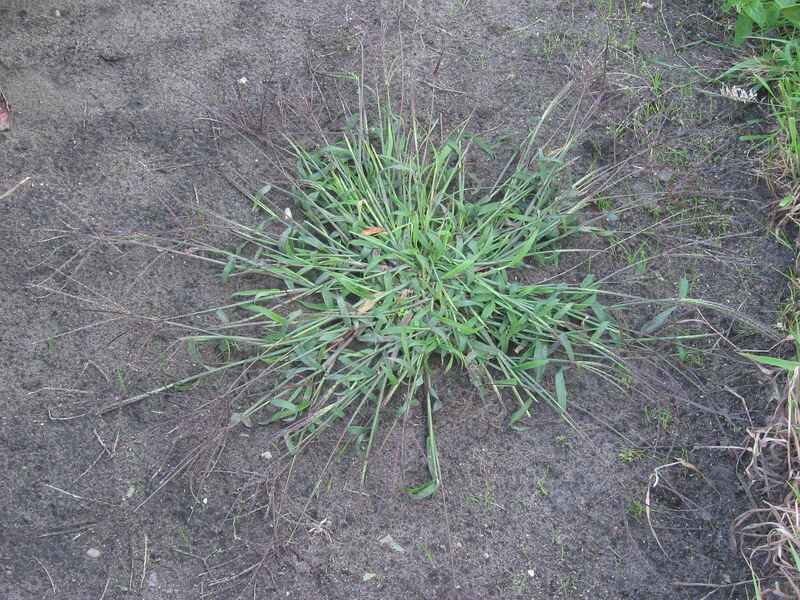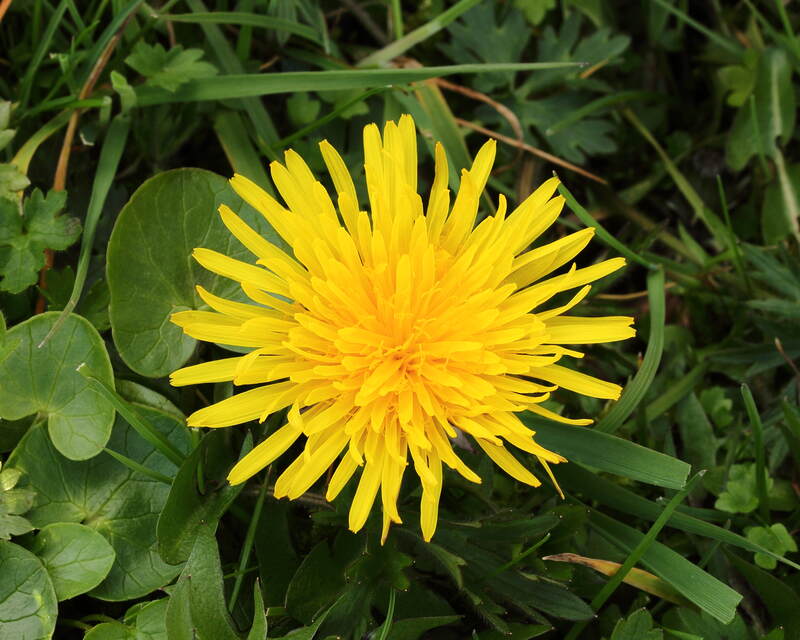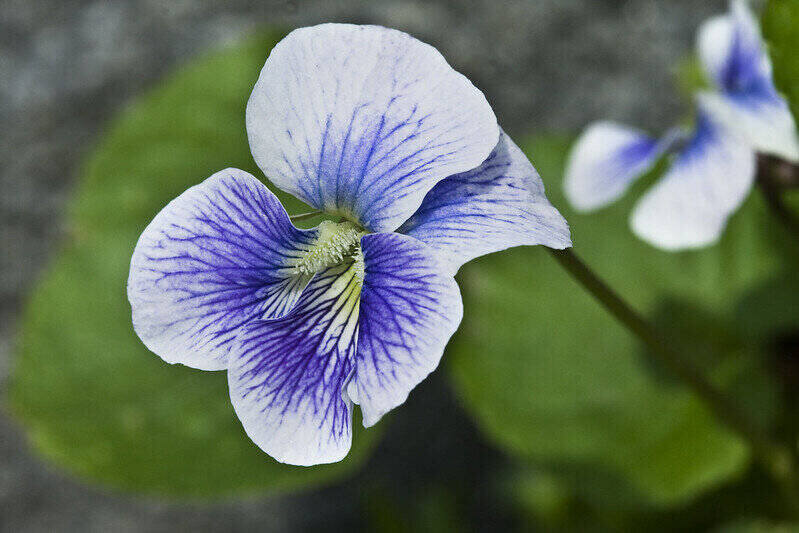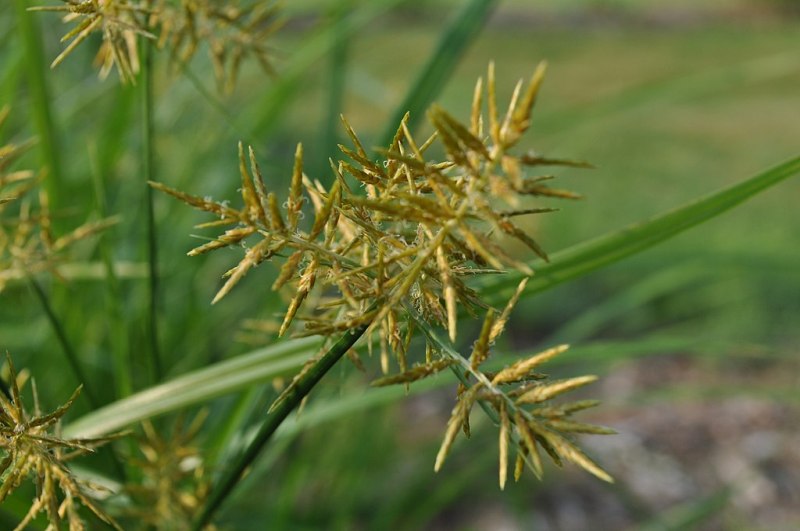
You want your lawn to look sharp, but the battle lies in the stubborn weeds that seem to pop up overnight. From crabgrass to clover and dandelions to yellow nutsedge, learn to identify the 10 most common weeds in your North Carolina lawn.
Common Weeds in North Carolina
1. Common Chickweed (Stellaria media)

Common chickweed germinates from seed in late summer or early fall. Once established, it thrives in the cooler months, taking advantage of the shady, moist areas in your lawn and garden beds.
Life cycle: Winter annual
Weed type: Broadleaf
Where it thrives: Chickweed likes shady, moist areas. It can also grow in mulch, making it a persistent nuisance for gardeners.
How to identify chickweed: Common chickweed forms a low, rounded mound of leaves. Its prostrate stems sometimes root at the nodes. The roots are fibrous. The leaves are opposite, very small, and smooth, with a pointed tip and teeth on the edges. The flowers are small, with five deeply divided petals that appear as 10.
2. Crabgrass (Digitaria sanguinalis)

Crabgrass is one of the most persistent and aggressive warm-season annuals found in North Carolina. As temperatures rise and summer takes hold, this weed takes full advantage of the heat, outcompeting cool-season turfgrasses and quickly spreading across your lawn. Left unchecked, crabgrass can turn a well-maintained yard into an uneven landscape.
Life cycle: Warm-season annual
Weed type: Grass
Where it thrives: Crabgrass can grow in different conditions: heat, drought, full sun, and partial shade. It germinates in the spring. It can produce thousands of seeds in a single season.
How to identify crabgrass: Leaves broader than average grass blades. They grow in clumps close to the ground and resemble crab’s legs. It is light yellow, but as it matures, its leaves take on a dark red shade.
For more information, check out these articles:
3. Dandelions (Taraxacum officinale)

Dandelions are one of the most recognizable weeds in North Carolina, known for their bright yellow flowers that seem to pop up everywhere. While they may look harmless, these persistent perennials are quick to take root in lawns and gardens, spreading their seeds with the help of the wind.
Life cycle: Perennial
Weed type: Broadleaf
Where it thrives: Dandelions can grow deep and thick taproots that extend up to 3 feet long almost everywhere. They bloom from March to November.
How to identify dandelions: Their jagged-edged leaves and hollow, leafless stems end in a bright yellow flower head. This flower will later turn into a fluffy white head. If you cut any part of this plant, it oozes a milky white juice.
For control methods, check out our article: “How to Get Rid of Dandelions.”
4. Ground Ivy (Glechoma hederacea)

This weed is an aggressive spreader in North Carolina. It forms long, slender stolons that root at the nodes and can overtake your yard without too much effort.
Life cycle: Perennial
Weed Type: Broadleaf
Where it thrives: It prefers moist, fertile, and shady spots but is tough enough to tolerate full sun as well. Its ability to root at multiple points makes it particularly difficult to control.
How to identify ground ivy: Ground ivy has leaves that are kidney-shaped, about an inch wide, and have scalloped edges. They grow opposite each other on long petioles and almost encircle the petiole. When the leaves are crushed, they emit a minty scent. Ground ivy produces small purple flowers in May.
5. Leafy Spurge (Euphorbia esula)

Leafy spurge is a deceptively attractive weed found in North Carolina. Despite its bright green leaves and clusters of yellow-green flowers, this plant is toxic and poses a serious risk to both animals and humans.
Additionally, its milky sap can cause skin irritation and blisters in humans, making it a weed that requires careful handling and control to protect both your yard and your well-being.
Life cycle: Perennial
Weed type: Broadleaf
Where it thrives: Leafy spurge blooms from late spring to mid-summer. Each flower produces an average of 140 seeds, making it a prolific spreader. It prefers soil exposure and dry conditions.
How to identify leafy spurge: Leafy spurge grows in clusters with upright stems that reach 3 to 4 feet tall. It has showy, yellowish-green, heart-shaped bracts that enclose small flower clusters.
6. Poison Ivy (Toxicodendron radicans)

Poison ivy can turn your North Carolina lawn yard into a dangerous space. Contact with poison ivy causes a rash and intense itching. This weed is sometimes confused with maple tree seedlings because of their similar-looking leaves.
Life cycle: Perennial
Weed Type: Broadleaf
Where it thrives: Whether in the sun or shade, this weed is a master of disguise and irritation. It spreads by seeds, creeping roots, and stems that root wherever they touch the ground. Birds often eat the seeds, contributing to their widespread distribution.
How to identify poison ivy: Poison ivy grows as a woody shrub or a vine. Its leaves are alternate, each featuring three large leaflets. The edges of these leaflets may or may not be toothed, and their shape can vary widely. Poison ivy becomes more noticeable during the spring and summer months. It produces greenish-yellow flowers in clusters at the leaf axils.
For control tips, check out our article: “How to Get Rid of Poison Ivy.”
7. White Clover (Trifolium repens)

White clover is considered an invasive weed for many North Carolina homeowners. However, there’s also reasons to plant clover lawns because of their adaptability and low maintenance characteristics.
Life cycle: Perennial
Weed type: Broadleaf
Where it thrives: Clover can grow in any type of soil, especially those compacted and acidic.
How to identify white clover: White clover is easy to identify for its three green leaflets and white flowers. Each stem can feature clusters of more than five blossoms.
For control methods, check out our article: “How to Get Rid of Clover and Not Kill Grass.”
8. Wild Violet (Viola spp.)

Wild violet is a common weed in North Carolina that adds a touch of beauty with its delicate, purple flowers. Although these blooms are edible and often admired for their charm, wild violets can quickly become invasive, spreading across your yard and competing with other plants.
Life cycle: Perennial
Weed type: Broadleaf
Where it thrives: Wild violet flowers germinate in the spring. However, once the temperatures rise in summer, the flowers fade. This weed forms rhizomes that allow it to spread and establish itself on your lawn. It likes moist, shady, and fertile sites.
How to identify wild violets: Wild violet forms a rounded clump about 5 inches high. Its heart-shaped, waxy leaves have a long petiole, with the blade often cupping toward it. The flowers are a lovely sight with five petals that range in color from blue to violet.
9. Yellow Foxtail (Setaria pumila)

Yellow foxtail is a common weed in North Carolina that often blends in with other grasses during its early stages of growth, making it difficult to identify. It closely resembles crabgrass, particularly when young, which can complicate efforts to control it.
However, as yellow foxtail matures, it develops a distinctive seedhead that resembles a “foxtail,” which sets it apart from other grasses.
Life cycle: Annual
Weed type: Grass
Where it thrives: It likes sunny spots on your lawn. It can grow in dry or moist conditions.
How to identify foxtail: It has a bright green color. A key feature is the presence of fine hairs along the leaf margins and the ligule, a small, thin structure where the leaf blade meets the stem. Its seed heads are neatly arranged on the spike, giving it a systematic appearance.
10. Yellow Nutsedge (Cyperus esculentus)

Nutsedge is a fast-growing perennial that loves to invade North Carolinian lawns. Despite its appearance, it’s not actually grass. It’s an aggressive weed that can outcompete your turf during summer.
Life cycle: Perennial
Weed Type: Sedge
Where it thrives: It prefers wet areas but can adapt. Nutsedge appears in the spring and grows actively until the first frost in autumn. It produces flowers and seeds in clusters of short spikes. It can form underground structures called nutlets.
How to identify nutsedge: Nutsedge stands out from your typical grass blades because it tends to grow a bit taller and has a pale green color. Its strands grow faster than most grasses. You can identify nutsedge by its stems, which grow in a distinctive “V” shape.
To get rid of it, check out our article: “How to Control Nutsedge in Your Yard.”
FAQ About Weeds in Your North Carolina Lawn
How can I get rid of weeds on my North Carolina lawn?
The first step in weed control is hand-pulling, which works well for small infestations. However, for larger areas overrun with weeds, herbicides are more effective. Get more details in our weed control guide.
Can herbicides kill grass?
Non-selective herbicides will eliminate everything they come into contact with. In contrast, selective herbicides are specially formulated to target specific weeds, leaving your grass unharmed.
Take a look at the following articles about herbicides:
- Types of Post-Emergent Herbicides
- 8 Best Post-Emergent Herbicides [Reviews]
- Applying Post-Emergent Herbicides to Your Lawn
What is a pre-emergent herbicide?
A pre-emergent herbicide is applied to lawns before weeds have a chance to germinate. It works by preventing weed seeds from sprouting and growing, effectively stopping them before they can become visible.
Here are some useful information about pre-emergent herbicides:
- 8 Best Pre-Emergent Herbicides for Lawns [Reviews]
- When and How to Use Pre-Emergent Herbicides to Kill Your Lawn’s Weeds
When to Hire a Professional
Identifying the most invasive weeds in North Carolina is the first step to maintaining a healthy and beautiful lawn. By knowing what you’re up against, you can take the right steps to control these common invaders before they take over your outdoor space.
If tackling weeds feels overwhelming or you want to ensure your lawn gets the best care possible, contact a lawn care professional. Whether in Charlotte or Raleigh, they can help you keep your yard looking its best.
More Lawn Care and Landscaping Resources for North Carolina:
- Best Grass Seed for North Carolina
- 14 Best North Carolina Native Plants
- When (and How) to Fertilize Your North Carolina Lawn
- Summer Lawn Care Tips for North Carolina
- The Best Time to Mulch in North Carolina
Main Image Credit: tomeyk / Adobe Stock Free / License